In the evolving world of online fundraising, the right platform can be a game-changer for nonprofits and charities. However, as your organisation grows and your fundraising needs evolve, it's important to recognise when your current solution may no longer be right for you.
In this article, we'll explore 7 telltale signs that indicate you've outgrown your existing online fundraising solution:
1. Poor Donor Experience
2. Limited Flexibility and Options
3. Inadequate Reporting and Analytics
4. Limited Integration Capabilities
5. Complex back office navigation and constant need for support
6. Growth Challenges
7. Limited pricing models
By identifying these signs, you can take proactive steps to ensure your efforts remain efficient, effective, and aligned with your organisation's goals. Whether you're seeking easy customisation, better analytics, or enhanced user experience, these signs will serve as your guide to improving your online fundraising strategy.
Sign 1: Poor Donor Experience
User experience (UX) plays a pivotal role in determining the success of your online fundraising efforts. It encompasses how donors interact with your website or fundraising platform, how easy and seamless their navigation and journey are, and it influences their decision to contribute or engage.
A positive user experience can significantly impact donor retention and acquisition. Donors are more likely to return and engage with your organisation when they have a user-friendly and enjoyable experience.
A poor user-experience can mean complex, cluttered, or confusing layouts that make it challenging for donors to find the information they need or complete the desired actions.
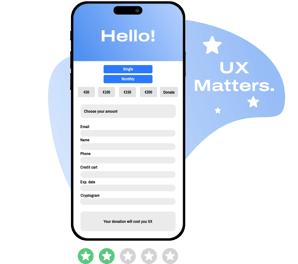
Some Navigation difficulties can include:
- Complex or Lengthy Forms with excessive or confusing fields
- Unclear Instructions: No instructions or progress indicators can leave online donors unsure about the steps they need to take.
- Ambiguous Buttons or Links: Donors may struggle if buttons or links are not clearly labelled or if their purpose is unclear.
- Mobile Responsiveness Issues: forms that do not display correctly on mobile make it difficult for donors to interact and complete their online donation.
- Slow Loading Times: Donors may experience frustration if the form takes too long to load or respond to their input.
- Security Concerns: If donors have concerns about the security of their personal or financial information, they may hesitate to proceed with their donation.
- Complex Payment Processing: Donors may encounter difficulties during the payment phase, such as issues with selecting payment methods or entering payment details.
Such issues often lead to donor frustration, decreased engagement, and abandoned transactions.
They may abandon their donations, leave your site, or seek alternatives that provide a smoother experience.
A poor user experience can damage your organisation's image and your ability to build long-term relationships with donors.
Sign 2: Limited Flexibility and Options
A fundraising tool with limited flexibility and options can significantly hinder a charity's fundraising efforts. It restricts the organisation's ability to adapt to diverse donor preferences and respond to changing fundraising trends. With a lack of options, campaigns become generic and less engaging, which may result in reduced donor contributions.
A lack of flexibility can make it difficult for the charity to tailor its message to their audience, connect with donors personally, and build trust.
Some essential options should include:
- A white-label platform: the ability to put your brand first. Creating your donation forms and campaigns with your charity’s colours, and branding enhances trust and recognition.
- The ability to create various campaign types: You can tailor your fundraising appeals to different donor preferences. Offer them the possibility to give one-time or monthly donations, create their own peer to peer fundraising campaign, participate in an event, or help you fund your projects through crowdfunding.
- Having unlimited forms: this provides versatility and the ability to adapt to various fundraising scenarios, and multiple forms simultaneously.
- The ability to conduct A/B testing: this option allows you to test different approaches. It can help you measure their effectiveness, donor engagement and conversion on each approach.
- Advanced Fundraising features to help improve conversion and increase your average donation amount. Some may include the last donor banner, donation amount equivalences, or most popular amount. Check out our article on more tips on how to increase your average donation.
Sign 3: Inadequate Reporting and Analytics
Effective reporting, data collection, and analytics are essential for informed decision-making in fundraising. They provide insights into donor behaviour, campaign performance, and fundraising trends, allowing organisations to fine-tune their strategies.
Robust reporting allows charities to:
- Track key performance metrics,
- Identify successful tactics,
- And measure their return on investment.
A solution with limited donor data, lacking real-time reporting, or not enough options for generating specific reports can limit an organisation's ability to have a comprehensive understanding of their fundraising efforts. This may lead to missed opportunities for optimization to reach their fundraising goals.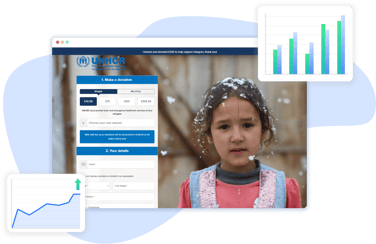
Without access to essential metrics and performance data, organisations may struggle to gauge the success of their campaigns, donor engagement, and overall fundraising strategy.
Sign 4: Limited Integration Capabilities
Limited integration capabilities in a fundraising tool can impede charities in several ways. It can lead to isolated data silos, where donor information is scattered across various systems, making it challenging to access a unified view of donor interactions.
This hinders efficient donor management, marketing, and engagement.
Without seamless integrations with other tools and platforms, charities may struggle to automate processes, resulting in duplicated efforts, data errors, and inefficiency within teams.
In today's interconnected digital landscape, integrations are essential to achieving a cohesive and holistic approach to donor relationships and fundraising success.
A solution's limitations with integrations may include:
- Difficulty in synching with customer relationship management (CRM) software (or donor management software)
- The inability to connect easily with email marketing tools,
- Limited compatibility with different payment processors
- Not supporting industry-standard APIs
- Lack pre-built integrations with other essential platforms.
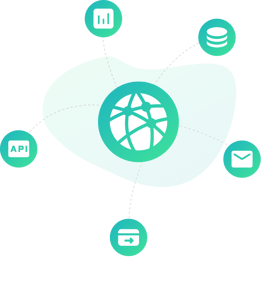
These limitations can force charities to rely on manual data entry, face challenges in keeping donor records updated, and prevent the automation of crucial fundraising processes. Ultimately causing missed opportunities for engagement and fundraising.
Sign 5: Complex back office navigation and constant need for support
Complicated fundraising solutions that demand extensive customer support and frequent client interactions can significantly hinder a charity's capacity to raise money and grow.
In an era where agility and autonomy are paramount, these convoluted systems often stifle an organisation's fundraising efforts. The importance of intuitive, and ready-to-use solutions cannot be overstated, as they empower fundraisers and teams to operate independently and efficiently. It is important that support and documentation are readily available, and presented in a clear manner when needed.
Complex solutions require constant hand holding, diverting precious time and resources away from the core mission of the charity. Having to heavily rely on customer support not only drains valuable energy but also limits the organisation's ability to scale and respond to rapidly evolving fundraising trends.
Instances of overly complex solutions may lead fundraisers to face the following challenges:
- Difficulty in launching and managing campaigns by themselves.
- Frustration when dealing with intricate features and settings.
- Errors in extraction and data analysis.
- Failure to harness the complete potential of donor management, interaction, and engagement.
When things are difficult to understand or don't work smoothly, it makes it hard for the nonprofit organization to take advantage of opportunities. Nonprofits may also find it hard to adapt to donor preferences and engage with them appropriately and, ultimately, it can hurt their goal to make a positive impact and grow.
Sign 6: Growth Challenges
A fundraising solution that can scale with your organisation is crucial for long-term success. As your organisation grows, so do your fundraising needs.
A scalable solution can adapt to increasing donor volumes, expanding campaigns, and evolving fundraising strategies. Without scalability, you risk outgrowing your current platform. It can lead to inefficient operations, missed opportunities, and the need to transition to a new solution. Scalability is essential for meeting the ever-changing demands of a growing charity.
The current platform may exhibit growth issues such as:
- slow performance as donor numbers increase,
- limitations on the number of campaigns or fundraising events it can handle,
- or constraints on handling a growing database of donor information.
Being able to scale has a deep impact on a charity's long-term fundraising success. A platform that can't grow with your organisation limits your ability to manage your growing donor database. It means it may not be able to handle higher numbers of campaigns, or respond to changes in the fundraising landscape.
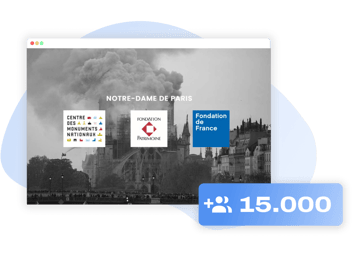 For example during emergencies, or special events, like Telethons, your organisation can experience a high influx of traffic and donations. This was the case during the Notre Dame de Paris Fire Emergency where iRaiser clients received peaks of up to 15,000 simultaneous connections! Needless to say a charity would suffer if their platform froze or couldn't process donations when it was important.
For example during emergencies, or special events, like Telethons, your organisation can experience a high influx of traffic and donations. This was the case during the Notre Dame de Paris Fire Emergency where iRaiser clients received peaks of up to 15,000 simultaneous connections! Needless to say a charity would suffer if their platform froze or couldn't process donations when it was important.
These limitations can result in operational bottlenecks, reduced fundraising efficiency, and the inability to fully leverage opportunities presented by your charity's expansion.
In the long run, inadequate scalability can limit your charity's fundraising potential and impede its mission to create a lasting positive impact.
Sign 7: Limited pricing models
Restrictions in pricing models of online fundraising platforms can have adverse effects on charities. It's known that nonprofit organizations often have diverse funding sources and budget constraints.
Limited pricing models may force them into a one-size-fits-all approach. However, one-size-fits-all may mean a lack of key functionalities required for a charity's unique fundraising strategies. It restricts financial flexibility and may cause overpayments, which the organisation could otherwise invest directly into the charitable mission.
Charities also often experience shifts in their fundraising strategies, donor bases, and financial capacities. Having different pricing models for organisations is instrumental in catering to their evolving needs and requirements.
With different options in pricing packages, charities are able to select the one that aligns best with their current circumstances, helping with cost-effectiveness. 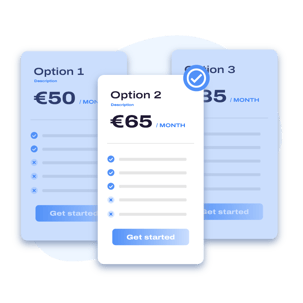
Whether it's:
- Scaling up operations,
- Embracing new fundraising techniques,
- Or adjusting to budget constraints.
Having the option of various models gives charities the power to make financially sound decisions, adapt to the dynamic landscape of fundraising, and easily embrace their growth.
In essence, multiple pricing models are a key enabler of financial agility for organisations on a mission to make a positive impact.
In conclusion, recognising the key signs of outgrowing your current fundraising solution is essential for your charity’s growth. From poor user experience and scalability issues to limited features, these indicators underscore the need for a more advanced platform.
It’s important for organisations to proactively evaluate their existing fundraising platforms and consider a change if it aligns with their expanding needs. The perfect fundraising solution helps charities achieve more and have a bigger impact on their missions.
If you need help choosing the right tool for your organisation, check out this article: Finding the right online fundraising platform!
